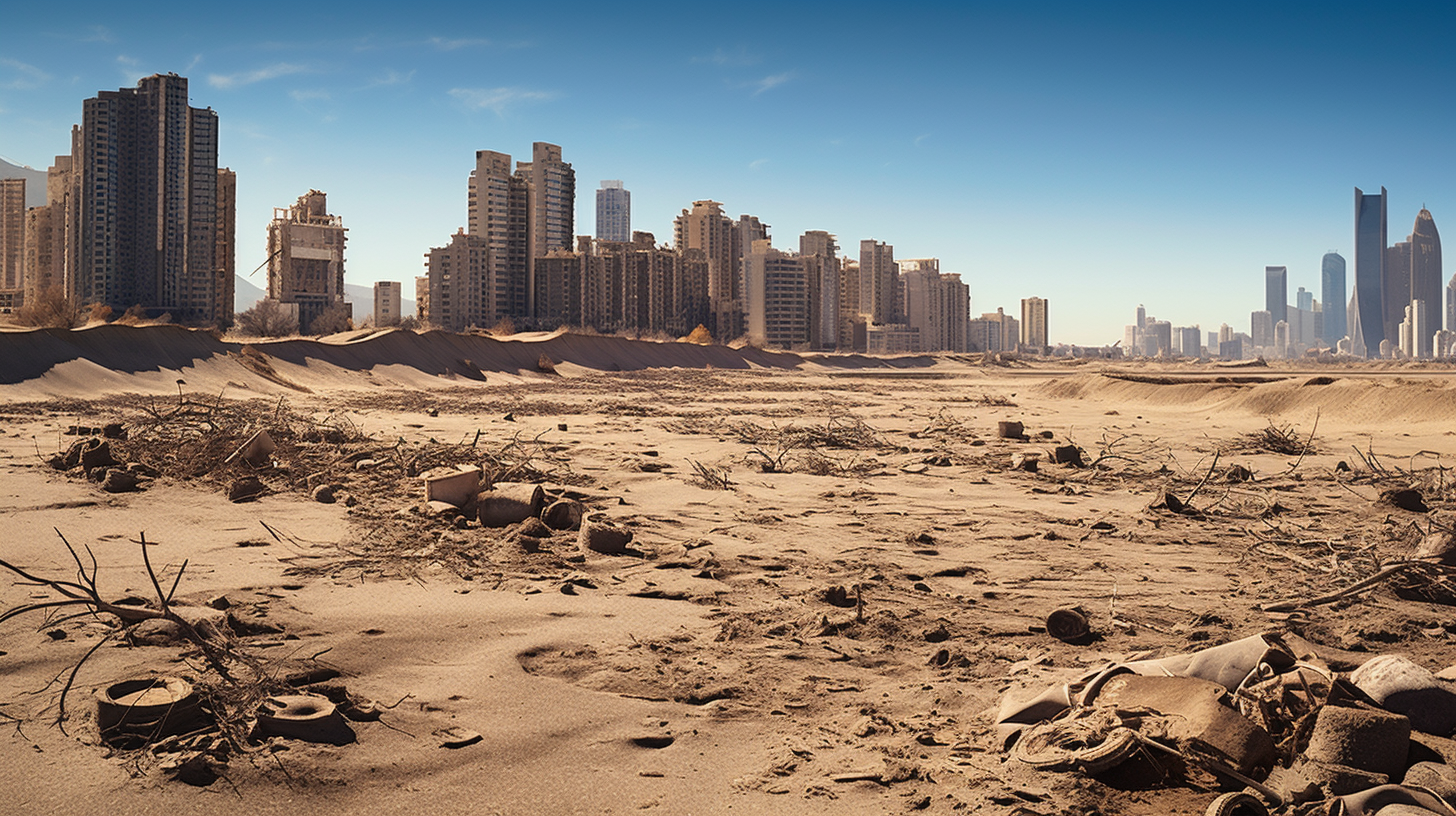Imagine a world where once-thriving urban forests and elaborate water fountains have been replaced with sand dunes and cacti. This is the world of the Arid Metropolis; a concrete jungle succumbing to the rise of a new desert, a byproduct of mankind’s own making. While ‘Cities in the Dust: The Aridification of Urban Dreams’ recounted the initial stages of urban centers transitioning into arid wastelands, we delve deeper into the daily dystopia of desert life amidst skyscrapers, where the remnants of civilization grapple with their new, harsh reality.
An Unwanted Transformation
The city, once a pulsating hub of activity, commerce, and connectivity, has been unwillingly thrust into a reluctant transformation. Beneath the desolate sun that beats down on cracked asphalt and rusting landmarks, where rivulets of water once flowed, now only dust devils dance to the tune of a hot, silent wind. What remains is a stark dichotomy – skeletal structures of the past jutting out from shifting sands, a mirage of modernity that no longer serves its purpose.
The Resilience of the Urban Desert Dwellers
Yet, amidst this bleak landscape, life persists in enclaves of resilience. Urban desert dwellers have adapted to this hostile environment, crafting homes from abandoned offices, growing hydroponic gardens in empty swimming pools, and engineering makeshift water collection systems. Night markets have replaced the traditional daytime hustle, reverting to age-old methods of trade and barter, as currencies have lost their value amongst those who value water and shade over silver and gold.
Culture in the Dust
The culture has evolved to embrace the relentless heat and omnipresent sand. Fashion is not only a statement but a necessity, with protective layers and goggles becoming the norm. Street art portrays the contrast between the halcyon days and the current apocalyptic aesthetic – a reminder of the cost of environmental apathy. Music, once booming from concert halls, has now taken an acoustic, almost haunting form, echoing between the buildings and reminding the city of its lost vibrancy.
Lessons from the Sand
There are lessons to be learned from the crumbling facades and whispered survival tales among the dunes. The role of water conservation and sustainable living has never been more pronounced. Adaptation strategies touched upon by our ancestors are revisited with a modern twist, but the looming question of ‘is it too late?’ hangs in the air, almost tangible in its presence.
The Legacy of the Arid Metropolis
The Arid Metropolis stands as a testament of warnings ignored. Ironically, it serves as an educational relic to a world that still might avert such fates – a dire museum detailing the chronicles of environmental disregard. In the hearts of the survivors, there lies a narrative of endurance, resourcefulness, and perhaps a fragment of remorse over the paradise lost.
Hope Amidst Hopelessness?
And yet, there’s a strange form of communal closeness that has emerged from shared hardship. The meaning of community has been redefined, where survival hinges not upon the individual but upon the collective efforts of the few who remain. They hold no illusion of their city being saved. But in this unyielding reality, they find a semblance of purpose, an unspoken pact to persist, if only to bear witness to the earth’s enduring narrative, and their place within it, until the very end.
Parting Thoughts
As the sunset casts long shadows over the Arid Metropolis, the inhabitants prepare for another night of survival. They understand the day has been long, the fight tiring, and the future uncertain. But in the darkness, in the stillness, there is an unquenchable human spirit that refuses to be suffocated by the sands of time.
